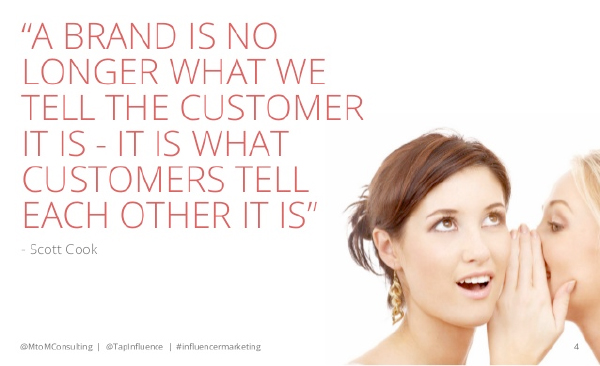![]() Posted by Cameron Francis
on
18 May , 2016
in
News Uncategorized
Posted by Cameron Francis
on
18 May , 2016
in
News Uncategorized

Investopedia defines arbitrage as “buying one thing in one market and simultaneously selling it in another market and profiting from the price difference”.
Here is an example of arbitrage. Buying a pair of skaters on Ebay for $25 and selling the same skaters on Amazon for $45.
But in his book, Attention Economy: Understanding the new currency of business, Thomas H. Davenport predicts that attention, not money, would become the most sought after commodity as well as the most difficult to gain and keep.
It is clear that money will do very little for you if you can’t capture some attention.
So, in this guide, I won’t be showing you how to flip cheap crap from Alibaba to Amazon.
Instead, I will show you how to capture what really matters in today’s business world: Attention.
A recent study by Microsoft found that people’s attention span has drastically reduced from 12 to 8 seconds — shorter than the attention span of a gold fish.
However, regardless of the waning attention spans, users are spending an incredible amount of time on social media platforms.
It is where they have redirected all their attention.
And this is where attention arbitrage comes in.
How Does Attention Arbitrage Work?
Basically, you spend time and resources learning how a social network works, crafting, posting, and engaging with users on the platform.
In return, you get an incredible ROI in terms of eyeballs and brand engagement.
In essence, you are trading your time and resources for attention.
The question of attention arbitrage is more complicated than it may seem.
There are a host of factors to contend with including the diminishing attention spans of users.
What is ‘in’ today can become obsolete very quickly.
Social networks generate a lot of noise after some time, diminishing the organic reach of your brand’s content on the network.
Twitter is a classic example of what happens when a platform starts ‘ageing’.
When Twitter first launched in 2006, it had all the promises of a great platform.
It allowed you to openly join in on other people’s conversation without looking like a stalker or a creep.
Users who jumped into the social network early used the engagement and attention that the platform was getting to build their businesses.
For instance, Gary Vaynerchuk built his family’s wine business from a $3 million business to a $60 million empire!
Unfortunately, beginning 2011, user engagement on twitter started to nosedive.
Tweets were not getting the same level of engagement that they used to get when the platform was still new.
Attention was shifting away from Twitter.
Users began to tune off.
The culture of following many users had boomeranged on Twitter.
There was so much noise on timelines and no easy way to sift through it.
Twitter can still redeem itself by making drastic changes to the platform.
But for now, too much noise means that the disproportionate value that marketers could get from the platform is no longer there.
If you can learn anything about the diminishing engagement on Twitter, it is that in order to leverage attention, you must be able to act quickly and seize opportunities before they fade into oblivion.
How can Attention Arbitrage Help your Business?
If your marketing budget is limited and if you are outspent by your competitors, you need to find a way to make each marketing dollar work harder for you.
This is where attention arbitrage comes in.
Attention arbitrage, while not a new phenomenon, has been thrust into the limelight in the past few months with the success of social media apps such as Snapchat and Instagram.
In essence, your marketing plan should include paying attention to what Gary Vaynerchuk calls white spaces — the areas where things are not yet happening but you think they could be huge.
You can find great results by using a social media platform that is undervalued and underleveraged.
If you are not number one, you need to find a place where others haven’t discovered and pitch your tent there.
Low cost of hiring influencers
When you are among the first marketers to join a social platform, you stand to gain a lot of value by hiring influencers to promote your business for less than their actual market value.
Their cost starts to skyrocket as other marketers discover the platform and competition hits up.
Less noise on the platform
A platform’s growth is both a blessing and a curse.
It’s a blessing because you have a new place to push your brand. And a curse because so many messages on a social platform create noise.
However, by becoming an early adopter and with moderate effort, you can manage to get your messages past some of the noise.
Low advertising costs
If a social media network introduces paid adverts on the platform, chances are that the rates will be lower at first.
By being an early adopter, you can take advantage of these low advertising rates to give your business maximum exposure.
A classical example, although not a social media platform, was when Google first introduced Adwords.
Businesses that got in the advertising network fast were able to get exposure for their businesses at ludicrously low CPC rates.
The Role of Social Media in Attention Arbitrage
Social media dominates the current state of the internet.
People spend 53% of their time online in one of the many social media platforms.
If you haven’t understood that, you don’t need to be in business.
Your goal as a marketer is to try and find a way to catch people’s attention on these platforms, and profit from it.
How do you do that?
By offering value to your audience.
You do this by creating quality content within the right context. If you are trying to promote your content in the wrong context, it doesn’t matter how good the content is, no one is going to engage with it.
Content might be king, but context is the god when it comes to attention arbitrage.
For people to pause and listen, your message must be within the right context.
For instance, social media is not the place to press for hard sales.
People log in to discover interesting ideas, watch cat videos, and see what their friends are up to.
The Ultimate Importance of Timing
To use attention as an arbitrage, you need to be good in timing.
A large part of your success will come from timing.
If you hit something at the right time, you will discover astounding results.
For instance, a few years ago, you could build and grow your online business just using Google Adwords.
It was the quickest and surest way of generating leads for your business.
And it worked like a charm.
But other businesses caught on.
The competition stiffened.
And the CPC became ludicrously expensive.
Although Google Adwords is still effective today, it is extremely difficult if not nearly impossible to build your business solely from it.
Zynga, now a multi-billion social gaming company, is another great example of what attention arbitrage can do for your business.
Zynga’s founder, Mark Pincus, saw an opportunity where other developers feared to tread.
In 2007, the company launched a free poker game on Facebook, becoming the first company to ever launch a social game on that platform.
Their daring move made the company instantly profitable.
Before Zynga, free games were largely seen as low quality and malicious shareware.
Zynga took the bold plunge, and almost overnight, people were playing the free Facebook poker games by the millions.
A year later, Zynga was able to secure $5 million venture capital to continue churning out viral Facebook games.
Other developers laughed at Pincus for launching a game on Facebook, and submitting himself to any draconian rules that Facebook may decide to enforce.
But Zynga continued to grow at the speed of Facebook.
Not everyone realised it, but at the time Zynga was in a race to beat others to the treasure.
If he learned and mastered how to make viral Facebook games and executed his strategies fastest, no other company, regardless of how huge would dethrone him.
And true to his vision, in 2008, Zynga raised another round as Kleiner Perkins Caulfield & Byers injected $28 million into the young company.
Today, there is a lot of competition in the Facebook apps industry, and Facebook limits how you can market your app to people.
Would Zynga be successful if they launched on Facebook apps today?
Maybe. But you can bet their success wouldn’t be as phenomenal. It would also take the company much longer to grow than it did back in 2007.
There is so much luck to be had when you get your timing right.
Take the case of Chris Brogan and his success on Twitter.
He is incredibly good on the platform.
But just like you and I, he started with nothing.
He got on the platform early, figured out what worked, and tirelessly worked on it.
Getting in early is the keystone to using upcoming, underleveraged, and undervalued social media platforms to your advantage.
Here is how to get in early.
Attention Arbitrage is How You are Able to Get in Early
The term ‘arbitrage’ is commonly used when discussing stock or currency trading.
Ideally, currency traders use arbitrage to make ‘riskless’ profit by exploiting temporary price variations in different currencies.
For instance, assume that you are able to take your stock of US dollars, purchase a stock of British pounds, then use the pounds to buy Japanese Yens, and afterwards use the Yens to buy US dollars.
At the end of the trading day, you manage to make $0.30 on each American dollar that you initially had.
The profit may not sound like a lot of money to get excited about. But if you are moving millions of dollars in every trading day, the cents begin to add up quite quickly.
By finding small temporary price variations between two currencies, and then moving in quickly, you are able to use market arbitrage to your advantage.
You can use the same strategy when it comes to digital marketing.
Why?
Because the effectiveness of digital marketing strategies is always changing and evolving
For example, Search Engine Optimisation used to be unbelievably simple a few years ago.
You could create a shabby 5-page site, throw a ton of low quality backlinks at it, and Google will reward you with higher rankings that would flood your online business with organic traffic.
You could easily game the system.
But none of those strategies work today.
Spinning your articles to meaningless mumbo-jumbo is also pointless since the first Google Panda update. And sprucing your content with too many keywords will flag you as a spammer in the eyes of Google.
The bottom-line: digital marketing is ever evolving. What works today might not necessarily work tomorrow. Specific tactics (such as organic Facebook reach) become less useful or incredibly expensive (AdWords).
This will always happen: As your competition latches onto under leveraged marketing tactics, those tactics start to become less valuable, meaning it might be time to move onto the next big thing.
Attention arbitrage is all about reacting and speedily moving onto the new, uncrowded, and underleveraged marketing opportunity.
In many cases, these will be sprouting social media networks or emerging advertising opportunities on a social media network.
Ash Read, a content crafter at Buffer, posts that there are two clearly identifiable growth peaks on any social network — a phenomenon he proceeds to call the Law of Double-Peaks.
These peaks are:
The Organic Peak
The organic peak happens when a social app starts gaining mainstream recognition.
Businesses that dive into a social network during the organic peak period tend to have the best attention arbitrage.
During this stage, early adopters will be trying to figure out
- How the platform operates;
- Which metrics matter the most; and
- What the audience on the platform wants to see
They will then create unique and engaging content to convey their brand message.
And if the platform takes off, they will be advantageously poised to receive more attention from new as well as existing users.
If you are lucky to join a social network during the organic peak, concentrate on building an audience, creating engagement, and gaining amplification of your content.
The Paid Peak
After sometime and as the social network matures into a full blown business, the organic reach and engagement starts to dwindle, and eventually drops.
The tactics that helped you gain a highly engaged audience do not work anymore.
However, something else happens at this stage.
Apart from diminished organic reach, the platform introduces paid advertising.
For many marketers, the transition between organic reach and paid advertising is an emotional one. It might take some time for them to adjust.
But as an attention arbitrator, you don’t have the luxury of waiting.
When a platform first introduces paid advertising, the CPM or CPC rates can be gloriously low, giving you another opportunity to kick ass.
The Case of Facebook
Facebook is probably the best illustration of the double-peak in action.
The years between 2009 and 2012 were the best years to build an organic presence on Facebook. Marketers who got in at this stage with a clear understanding of what the audience on the social network were craving reaped handsomely.
Between 2011 and 2012, Facebook’s organic reach had hit its peak.
Starting April 2012, Facebook’s organic reach began to dwindle.
The company began edging businesses towards promoting their posts to gain extra visibility.
Between 2012 and 2014, organic reach on Facebook declined so much as Facebook continued to mature as a business.
At this point, Facebook pages had an organic reach of less than 6%, with larger pages (50,000 and above fans), getting an organic reach as low as 2%.
- By February 2014, Facebook had become a pay-to-play platform and organic reach for most pages was down to 2%.
- In 2016, you should not even consider growing a business through organic reach on Facebook.
- Paid advertising may still work. But the platform is fast becoming saturated with advertisers (currently, there are over 3 million advertisers on Facebook)
- Companies coming to Facebook at this particular point have little chance of success without digging deep into their wallets.
From the above example, it is clear that you need to recognise what is about to happen and dive in at the moment.
But how do you spot those new marketing opportunities?
There is a step by step procedure that you can use to stay ahead of your competition.
The 5-Step Formula to Using Attention Arbitrage
- Follow the audience
- Make little bets
- Discover results and scale your operation
- Double down, and exclude what doesn’t work
- Giving without expectation
1. Follow the Audience
Social media networks are the new frontiers for digital marketing.
However, just like with other internet marketing strategies, what is in vogue today becomes saturated in a matter of time.
Or the audience simply shifts their attention to a new social network.
But this shift in attention is actually a blessing in disguise to the attention arbitrators.
It means you can follow your audience to a new platform and gain instant fame if there are few or no competitors vying for the audience’s attention.
I like to give examples using two social networks that caught everyone off guard; Snapchat and Musical.ly.
When everyone was busy criticising Snapchat for sexting and privacy scandals, a few people and brands were busy finding ways to connect with the young audience on the platform.
What are the results?
Guys who got into Snapchat early, learned what worked on the platform, and kept their fans consistently supplied with fresh and entertaining content have become celebrities in their own right.
Brands that started engaging with these young influencers were able to get their message across to a wide audience at a price that was way below the value of the service they received.
That’s attention arbitrage at its best.
Now, Musical.ly is poised to become the next big thing after Snapchat.
The evidence is clear in the number of followers the top influencers on the social network are getting.
Two of the most popular users on Musical.ly have hundreds of thousands of followers.
Is there any clearer signal than this?
If you can create a presence in the music social network and find a unique way to tell your story, you will be rewarded with a lot of value at an incredibly low cost.
Regardless of everything else you do, always make sure you build your presence where the most attention is being concentrated.
Where is the audience spending most of their time?
Look for the undervalued arbitrage of consumers’ attention.
If you think you can manage to story-tell and interact with the audience in a unique way, that’s where you need to be.
But you need to move fast.
2. Make Little Bets
Marketing has always embodied the ideals of experimentation and innovation.
But very few marketers are making small bets on sprouting social media networks.
Many marketers would rather go for the one or two time-tested and proven marketing platforms than risk failure on a new social app.
To become really phenomenal, you must have a desire for straying from the conventional.
Try as many little experiments as your time allows.
You might succeed… or you might fail.
The important thing is to make sure that the failure does not cost you very much.
If you are waiting for validation that a new social app is where you need to be concentrating most of your effort, you might be shocked to realise that it’s too late to get in.
In Little Bets, Peter Sims puts it, and quite correctly if you ask me, that innovation comes by taking little systematic bets, not radical insight or meticulous planning.
If you want to achieve phenomenal growth, don’t do what everyone else is doing.
You’ll never catch up with them.
Instead, you need to be on the lookout for new and uncharted territories.
It may take you time to find ones that work, but trust me; the rewards will be worth the grind and hustle.
There is no map or path that will guide you as you seek attention in a new social media network.
3. Discover Results and Scale Your Operation
The small bets you make may or may not give you results.
Either way, you need to find a way to measure results.
There is always something interesting to discover in marketing results.
If you find something that works extremely well, you’ll need to take a deeper look at it and try to establish whether it was luck or whether it is repeatable.
If it was earned, chances are that it’s repeatable, in which case you’ll need to move on to the next step.
4. Double Down, and Exclude What Doesn’t Work
There are very high chances that you are already overwhelmed by all the other social media networks that you’ve joined.
You lack the time, energy, and money to give to each of the social networks.
The good news?
When you discover something that works in a new social network, you can forget about all the other baggage.
You need to stop concentrating on networks and strategies that don’t work and double down on what is giving you results.
Remember that timing is critical.
You may only have a brief window of opportunity before your competitors latch onto to the opportunity.
5. Giving Without Expectation
Put your followers ahead of you.
Give them value without expecting anything in return.
When you put your audience ahead of yourself, things just happen.
It is kind of magical.
If you can learn how to give without expecting anything in return, you’ve got everything to gain and nothing to lose.
The greatest challenge for most marketers lies in being able to market their businesses without being overly self-promotional.
You have no way around this.
You must strive to be human in all interactions that you make on these new social media.
If it is hard for you to remain authentic, work with an influencer on the platform that you’ve decided to use.
People don’t want to be sold to on social media.
They did not sign up on Musical.ly to hang out with your business.
They signed up to connect with each other; not to advance commerce.
Be Social. Do Not Do Social
Regardless of the social network you’ve chosen to hangout, you cannot afford to be boring and corporate.
When you go to Rome, you do as the Romans do, right?
Well, the same applies to social media.
“If your company does not emphasise quirky, comical, spontaneous, human, personal, and light-hearted photo-centric content, you are doing it wrong”
You are riding against strong waves of human desire.
Smart marketers turn users on social platforms into adoring fans.
Fans turn out into adoring volunteer marketers.
Just look at what is happening on Musical.y with the ‘marketing team’ of Baby Ariel and Arii.
The two young ladies have become so ingrained in the community that you don’t even realise they are marketing Musical.ly to their peers!
The more you sell on social media, the less you’ll actually sell.
No one will even notice you.
Social media users have a way of inducing selective blindness on businesses that do not add value to the society.
Branded Content and Influencer Marketing
Many of the sprouting social media networks will at first become popular with millennials, mainly because millennials are more adventurous and suffer from severe cases of FoMo.
FoMo – anxiety that an exciting or interesting event may currently be happening elsewhere, often aroused by posts seen on a social media website.
Is your business prepared to interact with these young souls?
Probably not.
And this is where influencer marketing and branded content come in.
Instead of trying so hard to click with the demographic of tweens and teens, consider using influencer marketing to capture attention on social media.
Understanding the 3 Phases of Growth for Social Media Networks
All social media networks have a somewhat identical growth phase.
If you can identify the phase at which a network is, you will be well placed to make decisions that need to be made:
Early Adopters
Every social media network launches at this stage.
A lot of users at this phase are techies, analysts, marketer, and critics who like jumping on all the newest products and trends.
From an attention arbitration position, this is the time to pay closer attention to the app and understand how users on the app behave.
In essence, you are preparing yourself for when, if ever, the app goes mainstream.
However, you shouldn’t focus most of your efforts and resources on a social network that is on the early adopter phase.
Your focus should always been on an app that’s already gone mainstream where you can find a lot of engaged users.
When a social network is on the early adopter stage, it will go either of two ways: it will die into oblivion (Facebook’s Poke, anyone?) or spring into mainstream popularity as was the case with Snapchat.
You should only start investing your time, effort, and other resources on an app that has sprung into mainstream popularity.
Apps that are currently at this stage include Wanelo, Anchor, and Peach.
Key takeaway: Start testing the waters as soon as a new social network emerges.
Spend a little time with the app trying to figure out how your business would capitalise on the attention if the app was to go viral.
Mainstream Phase
As a social network grows, there comes a pivotal moment when it is ingrained within the current pop-culture.
It becomes the talk of the town, so to say.
Twitter’s moment was the Hudson River plane crash.
Once a social network hits the mainstream phase, it presents marketers with an opportunity to build an audience organically.
With great content and a strategy, organic views and clicks skyrocket at this phase.
However, after some time, the social network will become crowded, causing organic views and clicks to plummet.
This is usually due to a number of explainable reasons:
When you realise that organic reach has started dropping on a platform, the best strategy is to stop trying to grow your followers and start concentrating on getting clicks and conversions.
Some of the social networks that are at this stage include Snapchat, Twitter, Facebook, and Instagram.
What to Do: If you realise that a social network is showing signs of entering into the mainstream phase, seize the moment and go all the way in.
Try to get as much ROI before the network is overcrowded. Musical.ly offers such an opportunity right now.
Maturity Phase
Once a social network hits the maturity phase, organic reach drops almost to zero.
At this phase you will have to chuck out some money in order to reach anyone.
However, if you took advantage of the early adopter and mainstream phases, you may still be able to engage with the fans you had accumulated.
Facebook is an example of an app that has reached the maturity phase.
Business Fan Pages have an almost zero organic reach.
To get rich and engage fans on the platform, you will in most cases need to run paid campaigns.
What You Should Know: Just because a network has reached the maturity phase does not mean that you should abandon the fans you had accumulated over the years.
You have several options at this stage:
- Have them follow you to the new platforms that are kicking dust
- Continue engaging them using paid ads
Having fans follow you to the new place that’s gained mainstream popularity is an effective marketing strategy.
You literally don’t have to start from scratch.
Simply post messages encouraging your fans to follow your account in the new social media network.
Get the message up on your blog, in your Twitter account, and on your Facebook fan page.
If you’ve been offering real value to your audience, there is no reason why they won’t follow you to Snapchat, Musical.ly, Peach, or whichever new place you’ve decided to pitch your tent.
Some of the new social media networks will even offer you tools to help your fans make the transition.
We’ve seen this with Snapchat’s Snapcodes.
Where are Users focussing their Attention in 2016?
Snapchat might as well be the app that takes the crown in 2016.
It shot to popularity about 10 months ago, and has managed to remain there.
However, there are a few other social media tools that sprouted in 2015, and which we anticipate will continue growing throughout 2016.
Checkout our list below:
Musical.ly
It amazes me that marketers are yet to discover Musical.ly.
It is the coolest thing since Snapchat, and tweens and teens cannot get enough of it.
Musical.ly a music social app lets users record videos of themselves lip-syncing or dancing to popular pop-culture music.
It currently has an estimated 60 million active users, and the numbers are growing day by day.
If you were trying to put attention arbitrage into practise, I’d recommend you try it first on Musical.ly.
Find a unique angle to tell your story on the platform and go all the way in.
From the fame it has received with users, Musical.ly can only go one way; mainstream.
Periscope
It looks like everyone who wants to consume content wants to consume it ‘in-the-moment.’
Most social networks are already in the moment, but there are a few that appear to be more in-the-moment than others.
Periscope, which was acquired by Twitter, is an example of such a tool.
It allows users to share a live video broadcast of their lives.
It beats taking video, editing it, and sharing it later.
It is estimated that Periscope users watch 40 years of live video every day.
In a way, Periscope is not so different from Snapchat, which is used to send self-deleting photos and videos.
Snapchat and Periscope are teaching us that fans want immediacy in social media.
Peach
Peach will let you message your friends with cat memes, gifs and photos.
Peach is surprisingly addictive, and it won’t be a surprise if it gains as much popularity as Snapchat or Instagram.
We have every reason to believe that Peach is going to take off in 2016.
Unlike other social apps, this one has pedigree.
It is founded by Dom Hoffman, the guy who also founded Vine.
Vine was later acquired by Twitter in 2013.
Hyper
Hyper takes a few elements of popular social media networks to build a unique platform that is poised for incredible growth in 2016.
Like Instagram, its main function is photo sharing.
And like Reddit, it has an upvote/downvote feature that increases the visibility of the most popular snapshots.
The app also comes with geographical tags that make it easy for users to discover interesting new things that are happening in their neighbourhood.
Hyper is still in the early adopter stage.
It doesn’t have a large user base.
What it has is unique positioning and functionality that may make it take off some time in the near future.
Conclusion
Become a master of attention arbitrage.
It will grow your business phenomenally.
Keep your eyes open for sprouting and promising social media networks.
Attention arbitrage largely depends on the right timing.
If you hit an object at the very right moment, your chances of getting the desired results are greatly enhanced.
Don’t be afraid to ride the wave of user’s attention on a new platform.
The popularity of the social map may not last.
But what do you have to lose if you can get a few thousand new fans from the app?
Explore, Challenge Yourself, Be Creative, Win…
























